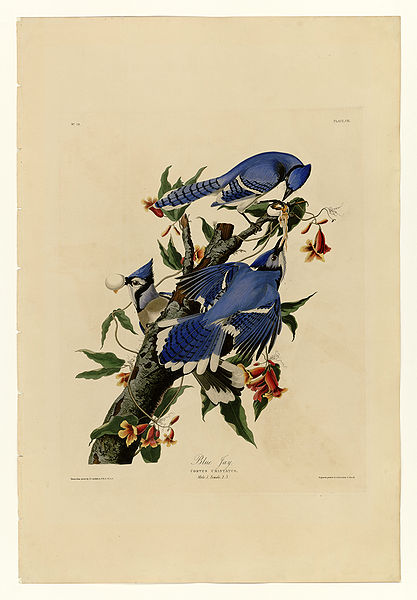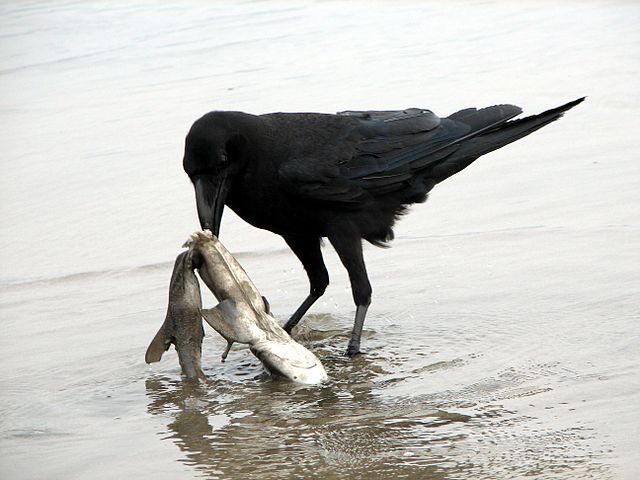The blue jay is a passerine bird in the family Corvidae, native to eastern North America. It lives in most of the eastern and central United States; some eastern populations may be migratory. Resident populations are also in Newfoundland, Canada; breeding populations are found across southern Canada. It breeds in both deciduous and coniferous forests, and is common in residential areas. Its coloration is predominantly blue, with a white chest and underparts, and a blue crest; it has a black, U-shaped collar around its neck and a black border behind the crest. Males and females are similar in size and plumage, and plumage does not vary throughout the year. Four subspecies have been recognized.
Blue jay
John James Audubon drawing circa 1830s
Merlin chasing a blue jay
Blue jay in flight
Corvidae is a cosmopolitan family of oscine passerine birds that contains the crows, ravens, rooks, magpies, jackdaws, jays, treepies, choughs, and nutcrackers. In colloquial English, they are known as the crow family or corvids. Currently, 135 species are included in this family. The genus Corvus containing 47 species makes up over a third of the entire family. Corvids (ravens) are the largest passerines.
Corvidae
Crested jayshrikes were thought to be in this family, but may be a type of helmetshrike instead.
Skeleton of American crow (Corvus brachyrhynchos) on display at the Museum of Osteology.
Corvids are highly opportunistic foragers. Here, a jungle crow feeds on a shark carcass.








